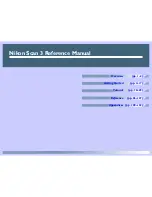
4
| Palo Alto Networks User-ID Services
Amigopod
|Technical Note
1
Introduction
This technical note demonstrates how Palo Alto Networks customers can leverage
Amigopod to provide User Identity tracking for both known corporate users (via Active
Directory, eDirectory etc) and now Guest &/or Public Access users accessing the Internet
through their Guest Access or Hotspot networks.
Audience
This document is intended for network administrators and system integrators deploying an
Amigopod-based visitor management solution in conjunction with a Palo Alto Networks
Next Generation firewall.
Basic familiarity with the Amigopod Visitor Management Appliance is assumed. For in-
depth information about the features and functions of the Amigopod appliance, refer to the
Amigopod Deployment Guide.
Some familiarity with the Palo Alto Networks firewall range is assumed, including
knowledge of their User-ID technology, Virtual-Wire deployment mode and their web
based User Interface.
Document Overview
The first section of this document describes how the Amigopod Visitor Management
Appliance can be used to provide end-user identity visibility to many of the Palo Alto
Networks Policy and Reporting features built on top of their core User-ID technology.
The next section contains a detailed configuration guide for administrators intending to
deploy Palo Alto Networks User-ID Services on the Amigopod Visitor Management
Appliance. Step-by-step instructions for configuring and validating a configuration are
provided.
Disclaimer
The topics of network design, security architectures and visitor access are complex
subjects, and no single document can hope to cover all of the possible combinations of
network equipment, network design, deployment requirements, and device configurations,
nor can all the possible security implications for a particular recommendation be covered.
Therefore, while you read this document, it is best to consider it as a guide to developing
your own understanding of the network design topics covered, and as a basis for further
investigation.





































